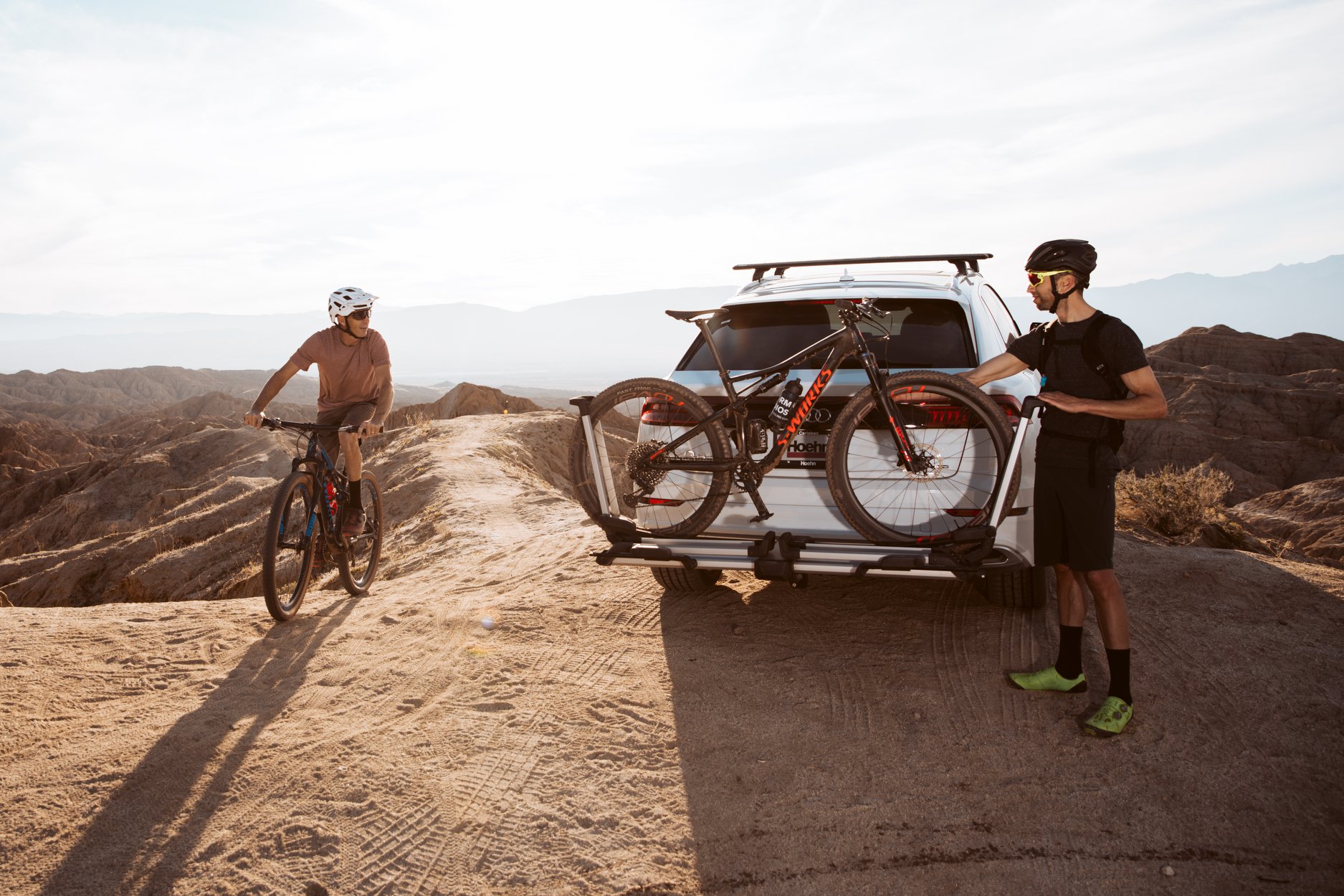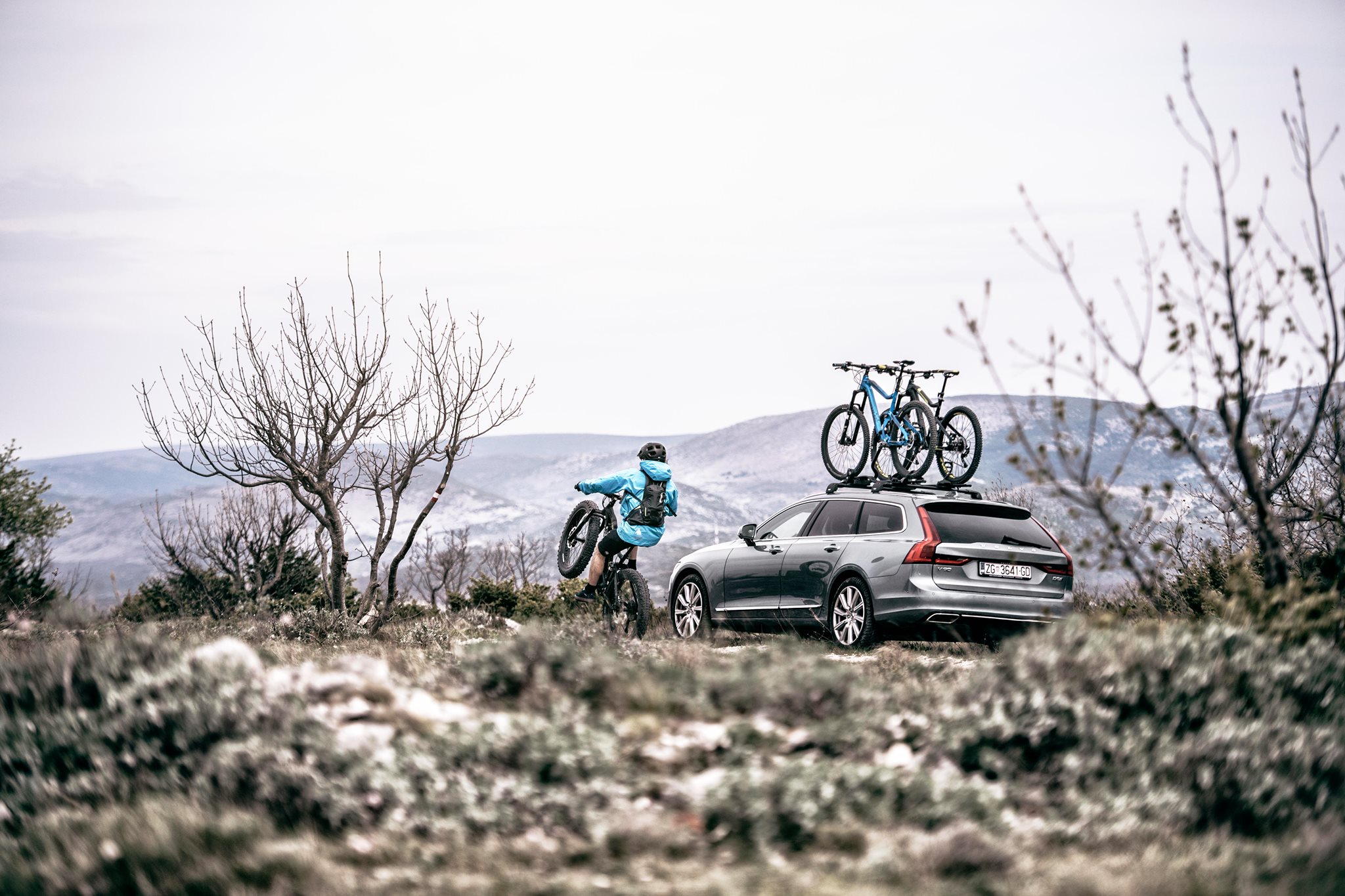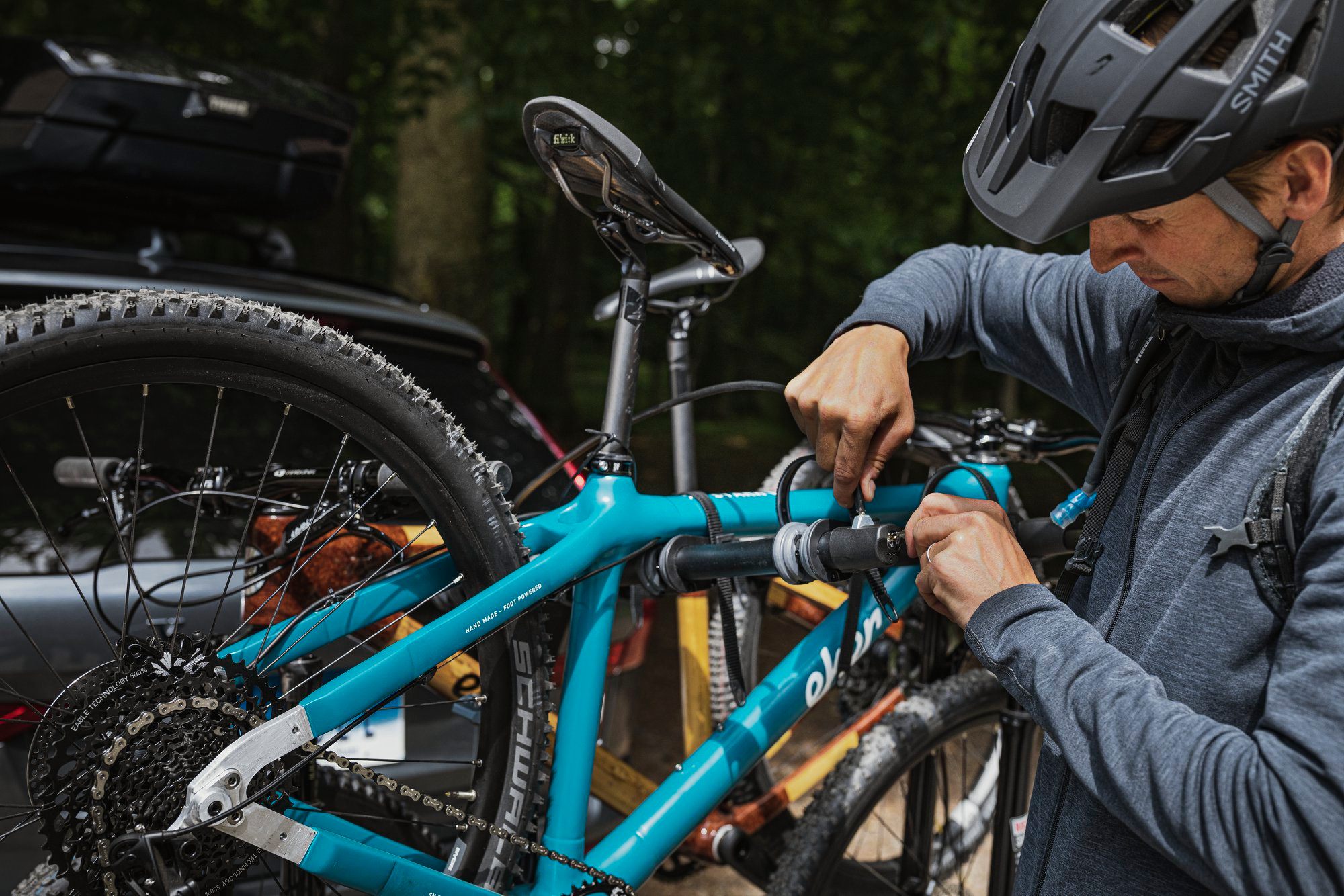Mountain bikers have two main options when choosing a bike rack for their vehicle: hitch racks and roof racks. Both rack styles have pros and cons, which can make one rack better suited to your needs than another. Read on to discover the rack style that will work best for you.

Hitch Racks
Hitch racks, which attach to your vehicle’s rear trailer hitch, can generally carry between one and four bikes and come in a variety of configurations—from those with trays that provide a platform for the bikes to stand upright on to those with cradles that the bike sits in.
Tray vs. Cradle
Hitch racks with trays are typically more expensive than models that cradle a bike in their arms like the Thule Helium Pro 2 Bike Rack. Tray models are super-versatile and can carry almost any type of bike without the need of an adapter, even troublesome models that are oddly shaped or small-sized. Tray models like the Thule T2 Pro XT also don’t contact the bike’s frame; rather, they secure the bike by the wheels, which minimizes the chance of damaging expensive carbon frames or scratching pricy paint jobs.
Hitch Rack Pros
- Provided you already have a hitch on your vehicle, installing a hitch rack is super easy—just slide the rack into the hitch and you’re good to go. Similarly, this makes taking the rack on and off your car simple if you don’t want to drive around with it all the time or you want to remove it in the off-season.
- Hitch racks hold bikes comparatively far away from your car, minimizing the risk of scratching it when loading and unloading your bikes.
- Hitch racks require less lifting than a roof rack, which is especially beneficial for those driving taller cars like an SUV. Because the bike is held essentially in front of you a few feet off the ground, it’s also easier to confirm that it’s secured properly than when you’re attaching the bike to your vehicle’s roof.
- Every cyclist knows someone with a story of driving into their garage, or some other low-hanging barrier, with their bike on their roof rack—no need to worry about that with a hitch rack!
- A bike in a hitch rack is less susceptible to bugs and pebbles than one riding on a roof.

Hitch Rack Cons
- A hitch rack increases the length of your vehicle which can make urban driving as well as maneuvers like parallel parking tricky.
- They can interfere with backup cameras.
- They can limit access to your hatch or trunk.
Must-Have Hitch Rack Features
Manufacturers have noticed some of the shortcomings of hitch racks and have adapted their products to address those issues. For example, cradle-style racks like the Thule Apex 2/Apex 4, have the ability to fold flat when not carrying a bike, shortening the often unwieldy length of the car plus rack, and increasing convenience for everyday use. Similarly, other cradle-style racks, such as the Thule Apex Swing, are able to swing or fold out of the way to improve access to the rear of the vehicle.

Roof Racks
Roof racks have been a reliable option for transporting bikes for as long as we can remember. There’s a roof rack for almost every type of user, they come in multiple configurations (namely wheel on and wheel off), and the number of bikes you can carry is limited only by the width and capacity of your vehicle’s roof.
Front Wheel On vs. Wheel Off
Racks such as the Thule Circuit XT that require taking the wheel off reduce the amount of weight you need to hoist onto your roof, are super secure, and minimize the height of your bike when it’s up there. Of course, there is that pesky question of what to do about that other wheel. The rack often also requires an adapter if your bike has a thru-axle. Conversely, racks like the Thule ProRide XT that allow you to keep the front wheel on are taller and eliminate the often-annoying step of removing your front wheel.
Roof Rack Pros
- A great choice for multi-sport athletes who will use the base rack for hauling kayaks, SUPs, skis, a cargo box, and any other outdoor equipment on the roof.
- Doesn’t interfere with access to the trunk or hatch.
- Simple to add capacity as needed—you can just add a rack, or two, provided there is space. Conversely, adding capacity to a trailer hitch usually means buying a new, larger rack.
- Your bikes have a much better chance of surviving a rear-end collision.
- For every story about a person driving into their garage with a roof rack on, there is one about a buddy backing into something solid with their hitch rack.
Roof Rack Cons
- More difficult to install and take on and off.
- The added drag of a bike on the roof can lower a vehicle’s fuel efficiency.
- Can be tricky to load, secure, and unload—especially if you have a tall vehicle like an SUV, you are short, or your bike is very heavy.
- A bike on top of your car is often loud, especially if you have an open sunroof.
- Parking garages, garages, and low-clearance awnings at places like hotels are a constant threat.

There are a ton of different types of mountain bikers and a rack for all of them—the key is to determine your needs, match the rack to them, and then get out and ride. Do you have a rack preference? Tell us in the comments.
Tim Peck and Doug Martland
Tim and Doug met long ago at the Eastern Mountain Sports in Canton, Massachusetts. Bonding over a love of slick Quincy Quarry granite, White Mountain sufferfests, and scheming up adventures while folding tee-shirts, today Tim and Doug collaborate to write about their favorite outdoor activities and occasionally get nostalgic about tee-shirt tables.




